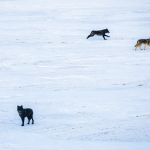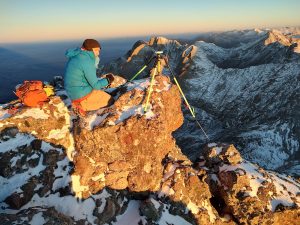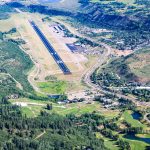Snowmass Village receives national grant for wildfire mitigation
Through the Wildfire Collaborative Roaring Fork Valley, $850,000 will accelerate the town's wildfire mitigation efforts

Austin Colbert/The Aspen Times
The Wildfire Collaborative Roaring Fork Valley has secured an $850,000 Natural Disaster Mitigation Enterprise grant through the Colorado Division of Homeland Security and Emergency Management, the organization announced on Tuesday.
This grant will support large-scale wildfire mitigation in partnership with the town of Snowmass Village, reducing wildfire risk, improving evacuation safety, and protecting critical water supplies, according to a press release. It’s part of more than $5.3 million awarded from Colorado Natural Disaster Mitigation Enterprise to 10 local governments focused on wildfire mitigation, flood mitigation, and water security.
Snowmass Village has been investing approximately $100,000 annually in local wildfire mitigation, steadily building capacity and reducing risk. The town, the Wildfire Collaborative Roaring Fork Valley, and Roaring Fork Fire Rescue launched a wildfire risk modeling project in Snowmass Village this September to help the community better understand its exposure to wildfire. The model was developed by Dr. Hussam Mahmoud, and the grant money will go toward implementing mitigation at a larger scale and dedicating funding to carrying out strategies identified by Mahmoud.
“This funding allows us to move immediately from wildfire modeling to on-the-ground implementation,” Angie Davlyn, executive director of the Wildfire Collaborative Roaring Fork Valley, said in the release. “Dr. Mahmoud’s modeling gives us an unprecedented understanding of how fire could spread through Snowmass Village and where treatments will make the biggest difference for life safety and structure protection. This grant will allow us to immediately get to work implementing the strategies that are identified.”
The $850,000 grant will allow the town “to act on detailed, data-driven priorities identified through Dr. Mahmoud’s model, focusing on corridors and neighborhoods where reducing fuels will most effectively protect lives, property, and infrastructure,” the press release reads.
The Wildfire Collaborative Roaring Fork Valley acknowledges through the press release that Snowmass Village is currently facing some of the highest wildfire risk in Colorado. The town’s “steep terrain, dense vegetation, and limited evacuation routes” are key elements that make fire suppression and evacuation difficult.
“We’re using state-of-the-art science to guide where and how we act, ensuring every dollar directly reduces wildfire risk for our residents, workforce, and visitors,” Alyssa Shenk, mayor of Snowmass Village, said in the release. “The town is deeply committed to wildfire resilience, and this partnership ensures we’re implementing the most effective strategies.”
Implementation of on-the-ground mitigation will begin in 2026. Over the next three years, the project will “significantly strengthen” Snowmass Village’s resilience to wildfire and post-fire hazards, according to the release.
“This kind of proactive mitigation is critical,” John Mele, fire marshal for Roaring Fork Fire Rescue, said in the release. “When we reduce fuels before a fire starts, we’re not only protecting homes and lives — we’re creating safer conditions for firefighters and first responders. This project will make a measurable difference in how a fire behaves, how we can fight it, and how quickly the community can recover.”
This project complements the Wildfire Ready Watersheds program, also led by the Collaborative, which maps post-fire flood and erosion risks across the entire watershed. As the newest funding in the Collaborative’s portfolio of wildfire resilience projects that span prescribed burns, fuels reduction, risk mapping, public education, and homeowner action programs, the secured grant represents “the Wildfire Collaborative’s commitment to scaling up wildfire mitigation across the entire valley, aligning local priorities with science-based strategies and national investments,” the press release reads.
Other current Collaborative efforts include a $2 million midvalley mitigation project near Sopris Mountain Ranch with the aim of reducing hazardous fuels and slowing the progression of fast-moving fire, a large-scale fuels reduction project in the 3-Mile and 4-Mile areas of Glenwood Springs, evacuation planning in Marble utilizing advanced wildfire modeling, the creation of a shaded fuel break in Basalt to protect homes and critical infrastructure, and ongoing cross-boundary, multi-stakeholder projects in and around Aspen.
For more information on the Natural Disaster Mitigation Enterprise, visit dhsem.colorado.gov/NDME.
Aspen supports raising utilities costs in 2026 budget
Aspen City Council supported a proposal by city staff Monday to raise the city’s water and electricity fees in 2026.









